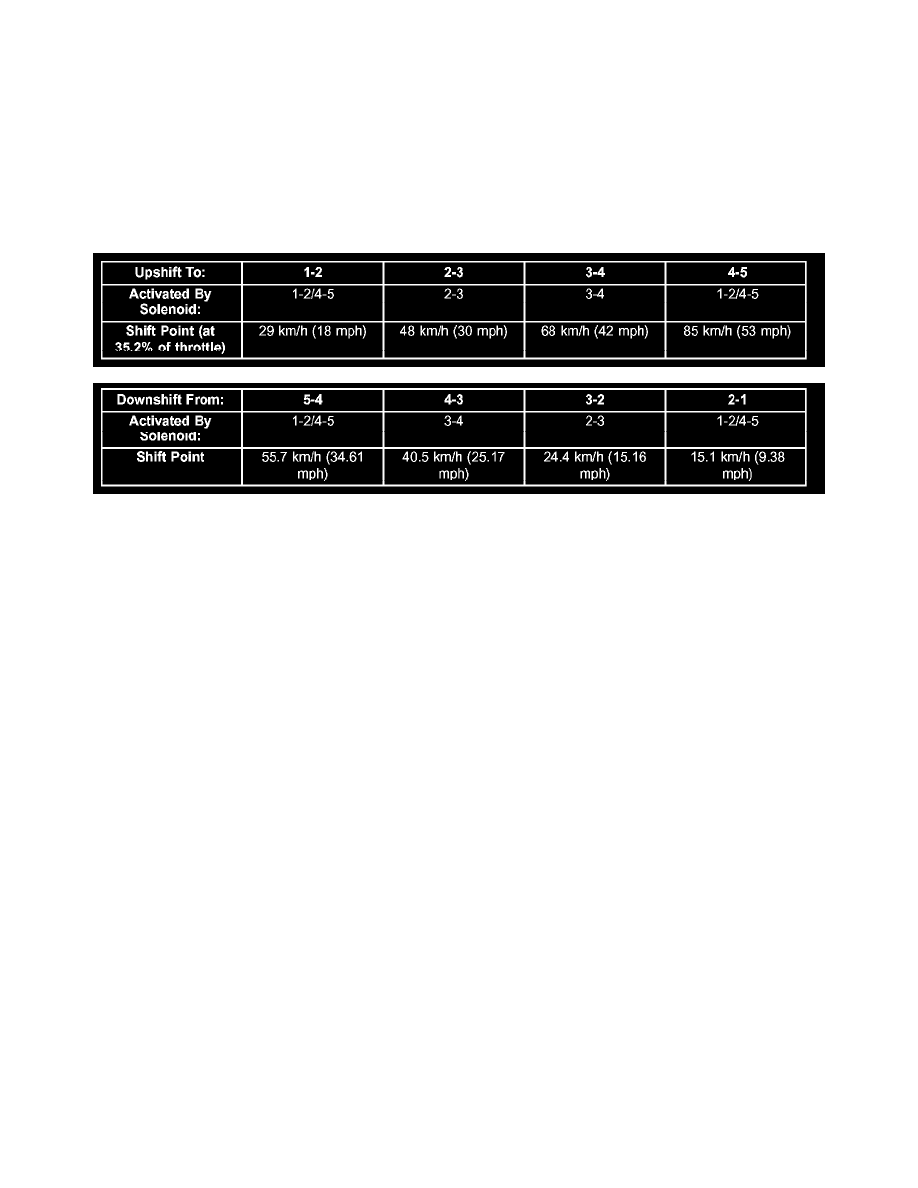Magnum SRT-8 V8-6.1L VIN 3 (2006)

-
Odometer Mileage
-
Maximum Effective Torque.
-
Engine in Limp-In Mode/Mileage Where DTC Was Set.
BRAKE TRANSMISSION SHIFT INTERLOCK (BTSI)
The BTSI solenoid prevents shifting out of the PARK position until the ignition key is in the RUN position and the brake pedal is pressed. The TCM
controls the ground while the ignition switch supplies power to the BTSI solenoid. The PCM monitors the brake switch and broadcasts brake switch
status messages over the CAN C bus. If the park brake is depressed and there is power (Run/Start) to SLA, the BTSI solenoid deactivates. The TCM
monitors this for the SLA because the SLA does not communicate on the CAN bus.
SHIFT SCHEDULES
The basic shift schedule includes up and downshifts for all five gears. The TCM adapts the shift program according to driving style, accelerator pedal
position and deviation of vehicle speed. Influencing factors are:
-
Road Conditions.
-
Incline, Decline and Altitude.
-
Trailer Operation, Loading.
-
Engine Coolant Temperature.
-
Cruise Control Operation.
-
Sporty Driving Style.
-
Low and High ATF Temperature.
DOWNSHIFT SAFETY
Selector lever downshifts are not performed if inadmissible high engine rpm is sensed.
ADAPTATION
To equalize tolerances and wear, an automatic adaptation takes place for:
-
Shift Time.
-
Clutch Filling Time.
-
Clutch Filling Pressure.
-
Torque Converter Lock-Up Control.
Adaptation data may be stored permanently and to some extent, can be diagnosed.
Driving Style Adaptation
The shift point is modified in steps based on the information from the inputs. The control module looks at inputs such as:
-
vehicle acceleration and deceleration (calculated by the TCM).
-
rate of change as well as the position of the throttle pedal (fuel injection information from the PCM).
-
lateral acceleration (calculated by the TCM).
-
gear change frequency (how often the shift occurs).
Based on how aggressive the driver is, the TCM moves up the shift so that the present gear is held a little longer before the next upshift. If the driving
style is still aggressive, the shift point is modified up to ten steps. If the driving returns to normal, then the shift point modification also returns to the
base position.
This adaptation has no memory. The adaptation to driving style is nothing more than a shift point modification meant to assist an aggressive driver. The
